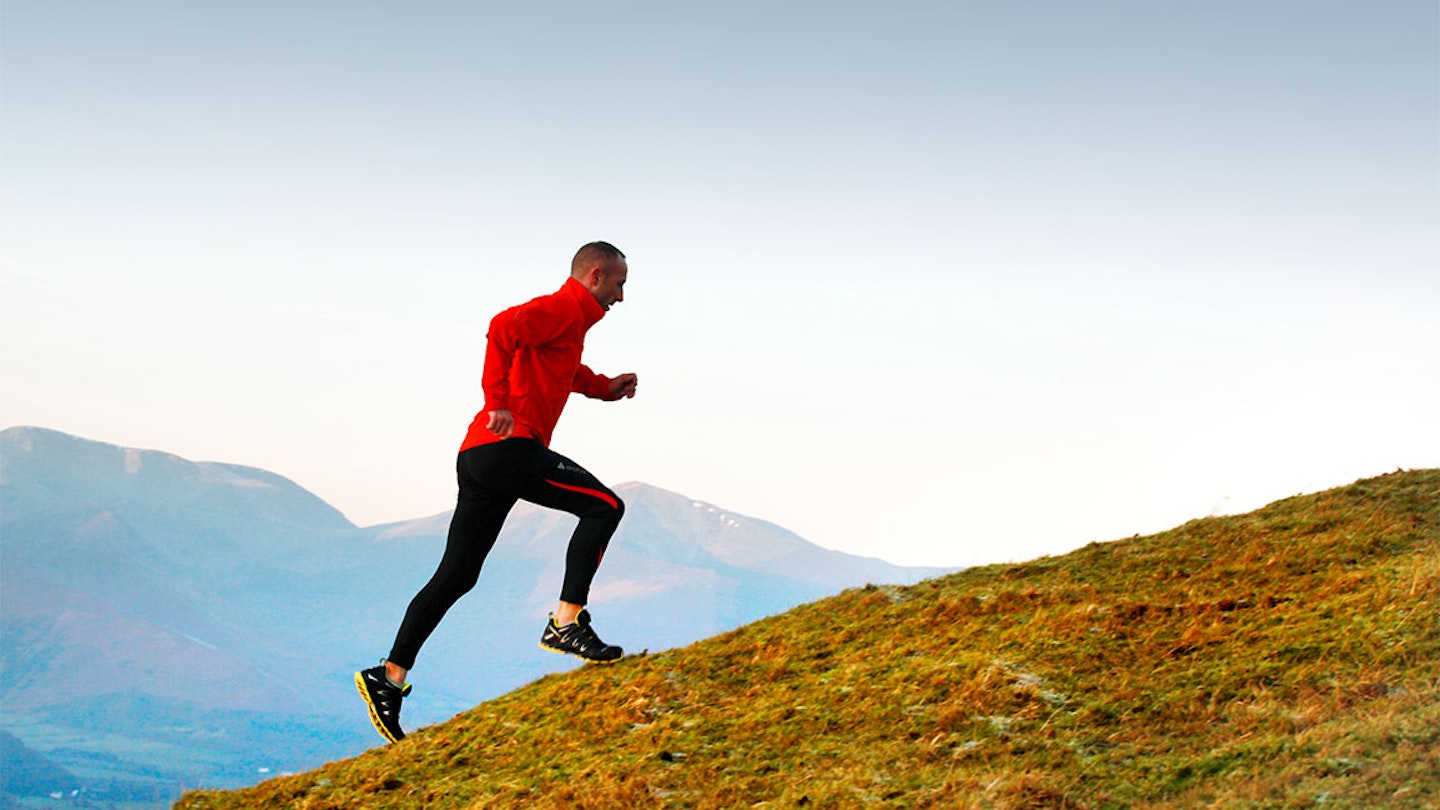Running uphill is never easy, and many of us come to dread hilly sections on a run route. In the worse cases, a hill can completely derail your run.
That's why it's important to add some hill-specific training into your running schedule, and have some uphill and downhill running hacks ready in your arsenal for when you need them most. Here's seven tips to help you master any climb...
How do you train to run up hills?
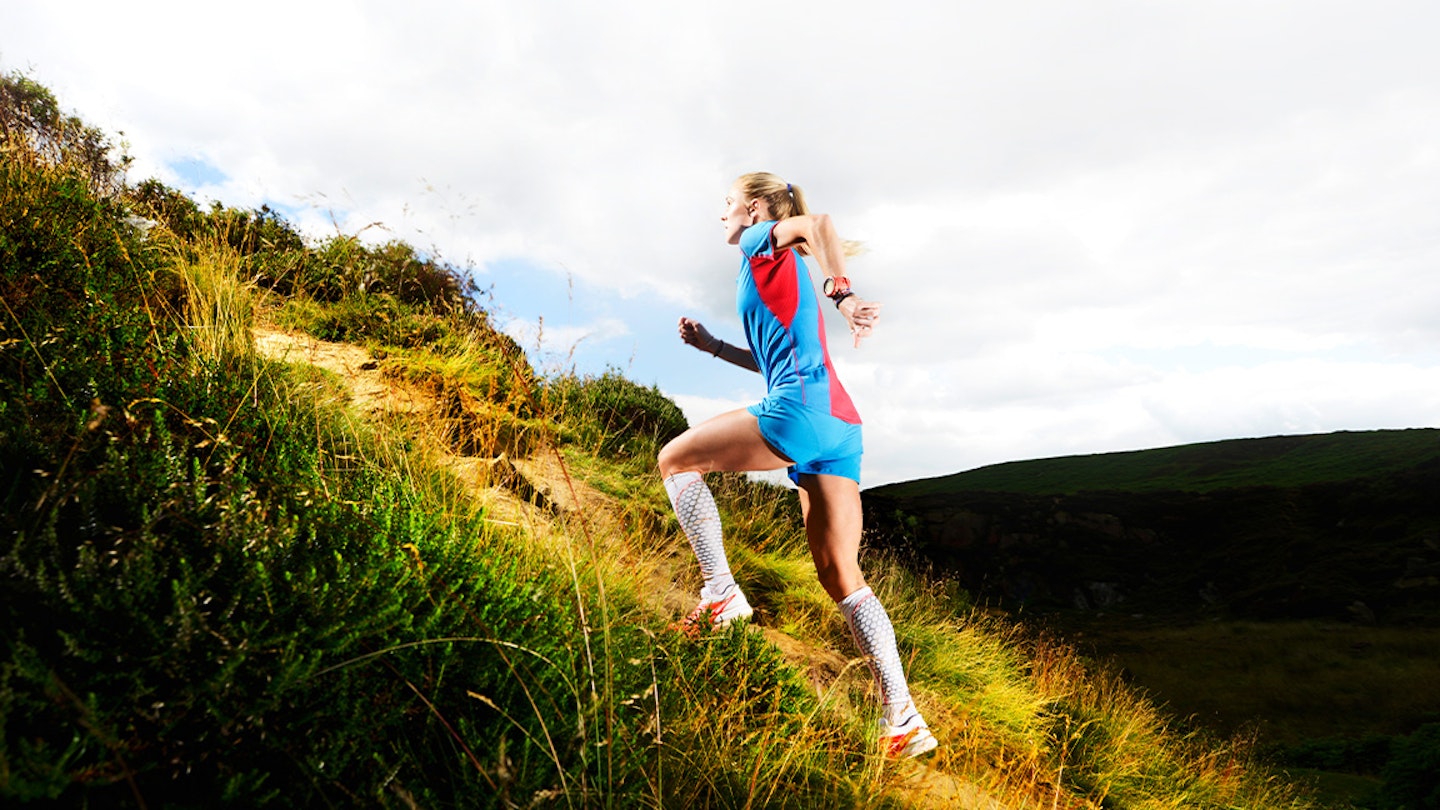
Make hills a habit
The quickest way to make hills easier is simple - repetition. They’re all tough, but the more you train for running uphill, the easier it becomes. Over the past few years, I’ve worked harder to become a better uphill runner, as I was quite weak in that area.
Get into the habit of doing one hilly run, or hill repetitions, once a week and you’ll reap the rewards within a month. People say that speed work is bad for hill running but this is 100% wrong. Being able to work at a high cadence (quick leg turnover) supports a stronger climb.
Try short intervals of 1-3min long, during which you put more effort in. Take a break for 30 seconds, then repeat the effort three times with a 2min rest, then repeat. And for the best endurance boost, take yourself up your favourite mountain at tempo pace.
Tempo pace is the fastest speed you can maintain for the ascent. It’s 70-80% of maximum effort and near race pace. It’s a tough, long run, but at the top you get to enjoy the summit views. Do this weekly to see your uphill speed and endurance soar.
Use mind power
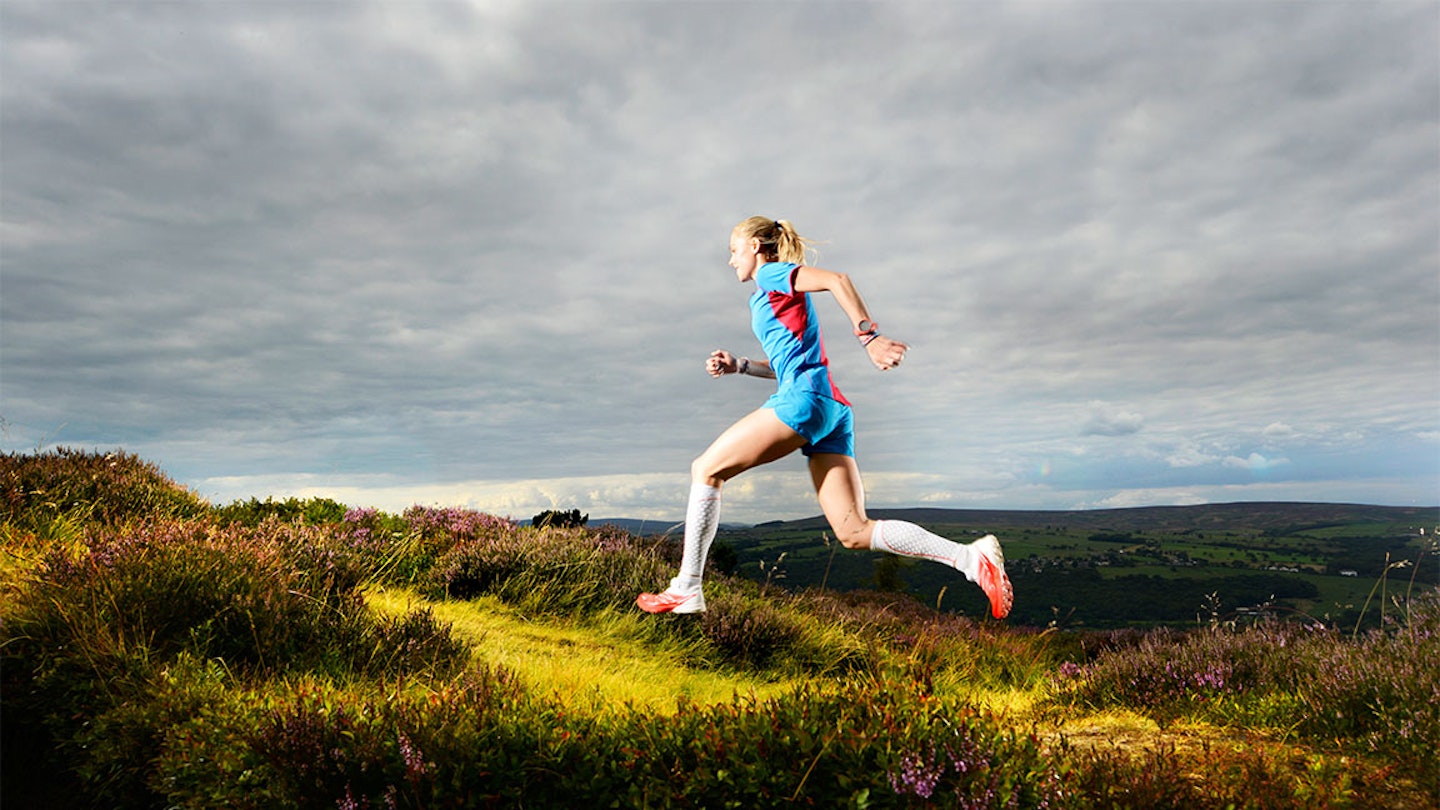
Do you know anyone who truly loves running uphill? If you do, they must be lying. People dread hills because they’re hard work. They can seem daunting and long when you’re at the bottom.
So, what mind trickery should you employ to enjoy tough hills in training? I’m quite a motivated person but when I’ve got a long, tough session I focus on one spot on the climb 5m in front. I’ll rarely look up at what’s left of the climb and try not to think about how much it’s hurting; that’s hard sometimes. I’ll either start thinking of something else completely or keep visualising the end goal I’m working towards.
One useful mantra I use is, 'It’s a hill, get over it!'. However, it’s not all about mind power. You need to believe in yourself to get the best out of your body, but at the same time if you haven’t put the hard work into training, your mind won’t climb those hills for you.
Slow down!
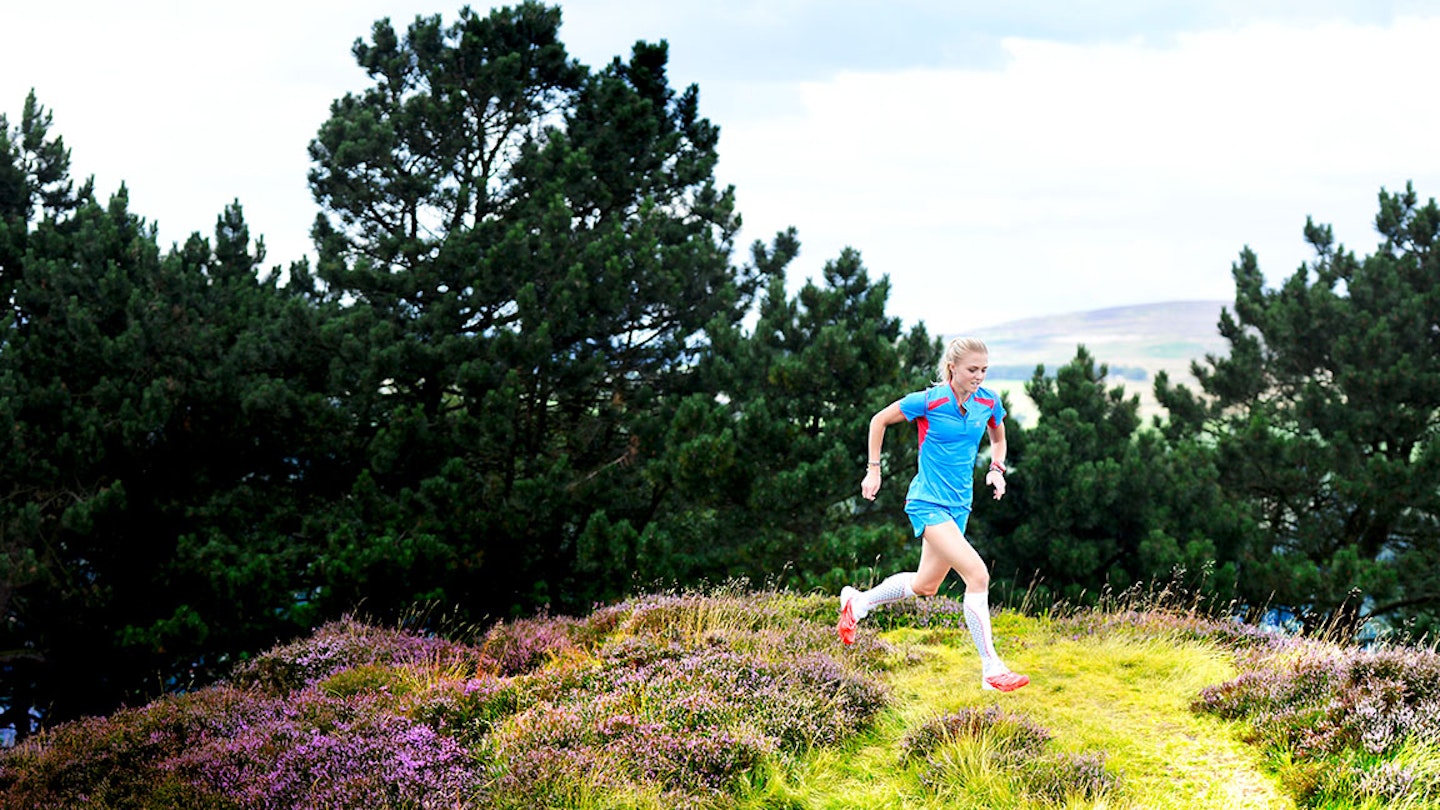
It’s the part we’ve all been waiting for; running more slowly uphill actually works! Trying to get a hill over quickly may result in it taking longer. It’s better to run the hills at your own pace and not race those around you, which is easier said than done.
Always feel as if you’re running within your limits in the early stages. Even if you feel fine at the start, it could come back to bite you in the bum later in the race. Walking uphill is another great trick if you know when to use it. Put your hands on your knees and push yourself forward. I’ve actually seen people moving faster using this method than others who are running during tough parts of races. Powerwalking really steep or technical sections can be more efficient.
Perfect your uphill technique
Make every uphill run easier with these key technique tips. If you’re not sure you’re doing it right, try filming your ascents to see where you can improve. First of all, you should alter your stride to account for the elevated terrain. Make your steps shorter and drive your knees higher on each step to help power yourself up the incline.
Drive with your arms and focus on the ground and any obstacles in front of you. To maintain the highest power, increase your cadence and push off from the balls of your feet.
Don’t skimp on the warm-up
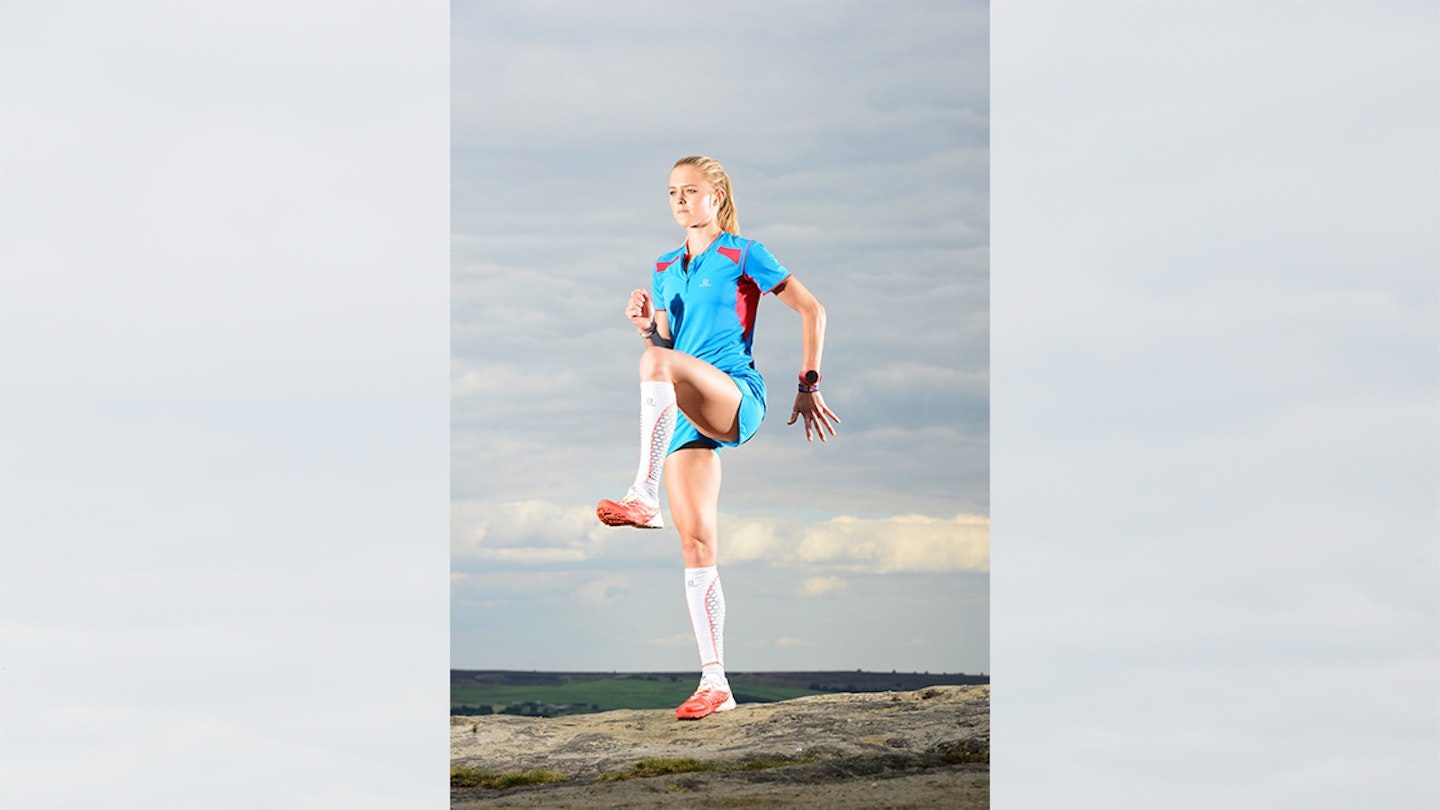
You’ve a lot less chance of pulling something and performing well both up and downhill if you warm up before training or racing. I’ve grown up warming up with dynamic stretches and drills that mimic the action of running. Start slowly with light movements like arm and ankle circles, through to high knees and bum kicks, then gradually increase the pace to finish with strides. This loosens the joints and muscles, getting your body and mind ready to have a good hard session. Then, try these three core exercises:
Calf mobilisation
Raise one knee to stand on one leg, then stand on tip toes. This is a calf raise and a balance all in one to get your leg and core stabilisation muscles ready to run.
High knees
Run along with short steps, lifting the knees high so your thigh is at right angles to your body.
Strides
Once warmed after a few drills you’re ready for these exaggerated bounds, raising the leading leg high and pushing through the foot to leap as far as you can.
Target your strength training

These two exercises are key and should be included in your weekly strength and conditioning circuits session if your aim is to improve your hill running abilities. Or, do them every morning for a powerful wake-up blast.
Strength squats
Do 3 x 6-10 squats. Start with a simple squat, then as you improve do 3 x 6 holding weights, or a medicine ball, or wear your backpack to make it harder. Build to 3 x 10.
Power lunges
Try a reverse lunge to high knee drive. From a standing position, lunge backwards and then, with the same leg, drive the knee forwards, out in front and hold the running position. Repeat 3 x 5 times on the left, repeat on the right.
Eat right for hills
I suggest eating 1.5-2 hours before hill training sessions. Drink to thirst so you hydrate well but not too much. Stick to your usual nutrition leading into a race. If you want to change it, practise in training sessions.
Top image credit: S. Holmes
